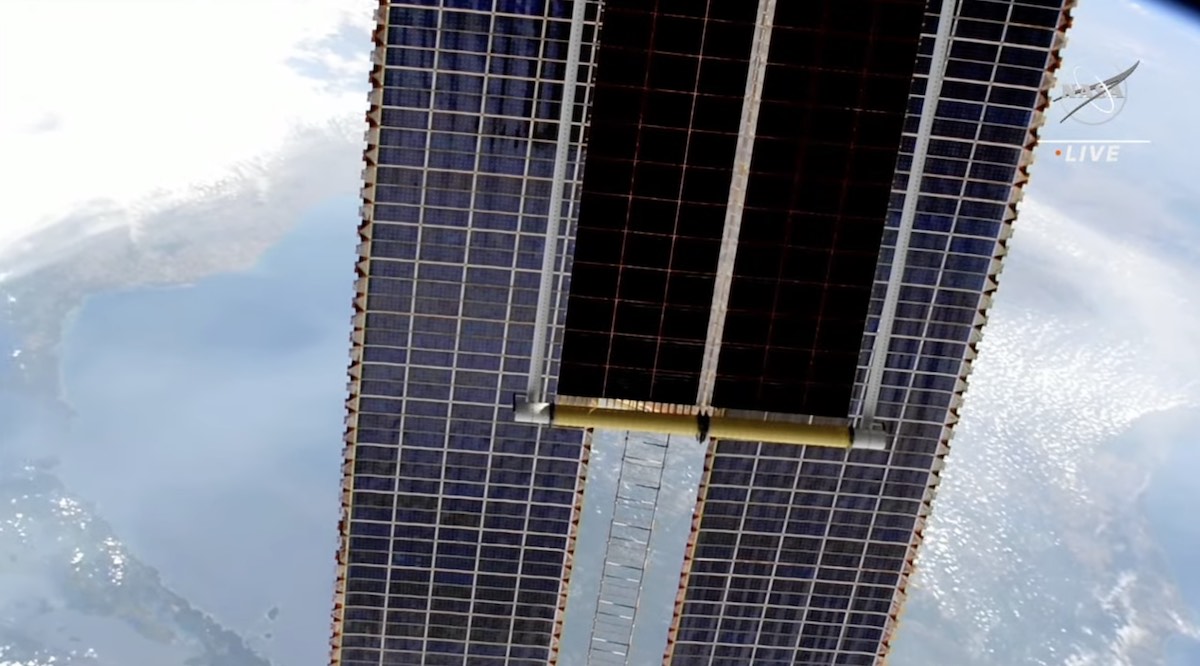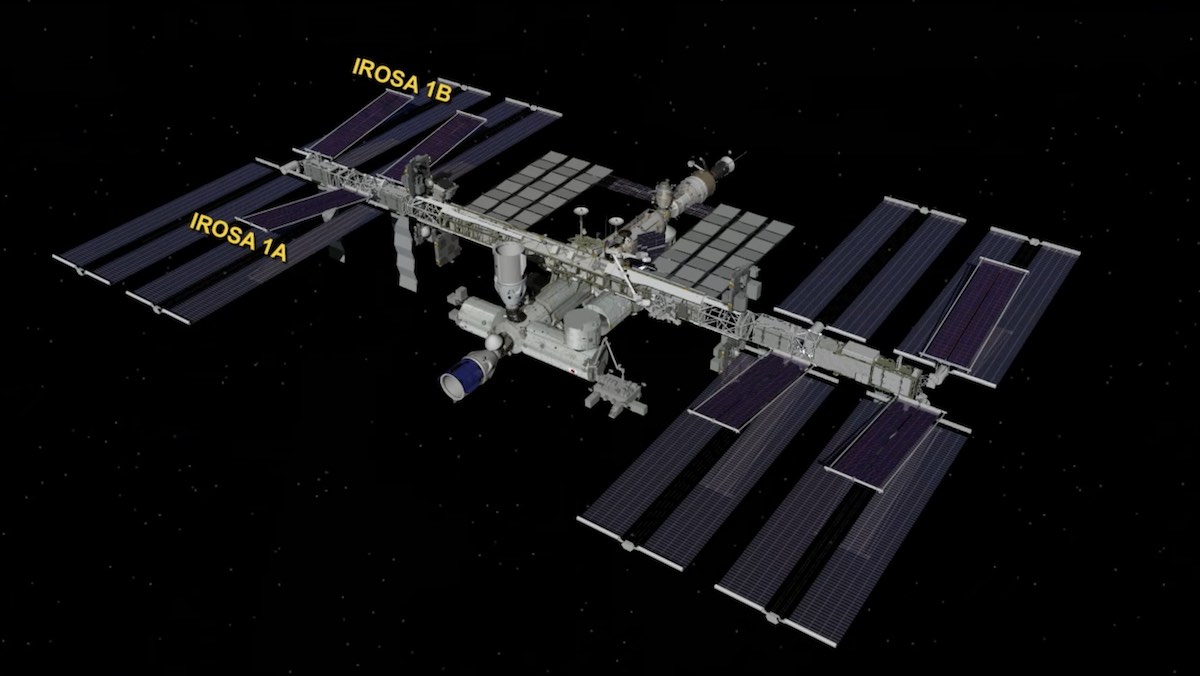
Astronauts Steve Bowen and Woody Hoburg suited up and floated outside the International Space Station Friday for a spacewalk to install and unroll an upgraded solar array wing delivered to the complex earlier this week by a SpaceX Cargo Dragon supply ship.
The astronauts switched their spacesuits to internal battery power at 9:25 a.m. EDT (1325 UTC) Friday. After depressurizing and leaving the Quest airlock, Bowen and Hoburg headed to the starboard, or right, side of the space station’s football field-long power truss to begin work to mount the new solar array into a bracket fixture, then deploy the solar blanket.
A SpaceX Cargo Dragon spacecraft hauled the two new ISS Roll-Out Solar Arrays, or iROSA units, to the space station earlier this week. The unpiloted cargo capsule launched Monday from NASA’s Kennedy Space Center in Florida and docked at the space station Tuesday, then the lab’s Canadian-built robotic arm removed the solar arrays from the Dragon spacecraft’s rear cargo bay and positioned them in a temporary stowage location on the station’s truss.
Bowen and Hoburg picked up from there with Friday’s spacewalk.

The astronauts released restraint bolts on one of the two new solar arrays, and Hoburg climbed into a foot restraint on the station’s robotic arm. Once the solar array was released from its carrier, Hoburg held the spooled-up blankets — folded up to together and measuring about the size of a refrigerator — as he rode the robotic arm to the new solar array’s permanent home on the S4 truss section, just inboard from the right end of the space station’s backbone structure.
The spacewalkers there affixed the rolled-up solar array onto a mounting bracket installed on a previous spacewalk, then unfolded a hinge in unfold the two blankets making up the iROSA unit, like opening the cover to a book. Bowen torqued eight bolts with an electrical tool to firmly mount the iROSA to its mounting bracket.
The mounting bracket plugs the new arrays into the station’s power channels and rotary joints, which keep the solar wings pointed at the sun as the spacecraft races around Earth at more than 17,000 mph.
The International Space Station has eight power channels, each fed with electrical power generated from one solar array wing extending from the station’s truss backbone. The new solar array deployed Friday will produce electricity for the space station’s 1A power channel.

Then Bowen and Hoburg mated four electrical connectors to the new roll-out solar array, which was positioned to partially cover one of the space station’s original solar panels delivered by a space shuttle mission during the lab’s construction 16 years ago this week. The eight older solar arrays have degraded over time, as expected, and NASA procured six roll-out solar panels to boost the space station’s power generation capability back above its original capacity.
NASA is planning to order a final pair of roll-out solar arrays to complete the space station’s electrical upgrade, which will ensure the lab has enough power to support research through the station’s planned retirement date in 2030.
The astronauts connected a “Y” cable to allow power from both the original solar array and the new iROSA to flow into the station’s power grid, then Hoburg released two more bolts that kept the iROSA blankets rolled up for launch.
The blankets took about 10 minutes to unroll to their fully deployed length of 63 feet (19 meters). Each roll-out solar array measures about 20 feet (6 meters) wide, and are about half the length and half the width of the station’s original solar arrays.
Despite their smaller size, each of the new arrays generate about the same amount of electricity as one of the station’s existing solar panels. The design of the deployment mechanism eliminates the need for motors to drive the solar array open.
Once the blanket unfurled, the astronauts adjusted tensioning bolts to secure the iROSA blanket in place.

Then Bowen and Hoburg headed back inboard on the space station’s truss to prep another iROSA unit that will be installed on the far right end of the truss structure during a spacewalk June 15.
With their tasks complete, the astronauts made their way back to the Quest airlock and closed the hatch. NASA marked the spacewalk officially complete when the astronauts began repressurizing the airlock at 3:28 p.m. EDT (1928 UTC). The spacewalk duration was 6 hours and 3 minutes.
The spacewalk Friday was the ninth in Bowen’s astronaut career, and the first for Hoburg. It was the 264th spacewalk since 1998 in support of International Space Station assembly and maintenance, and the seventh spacewalk outside the research outpost this year.
Email the author.
Follow Stephen Clark on Twitter: @StephenClark1.
Article From & Read More ( Astronauts install new roll-out solar array outside International Space Station – Spaceflight Now - Spaceflight Now )https://ift.tt/FNO7sLv
Science
No comments:
Post a Comment